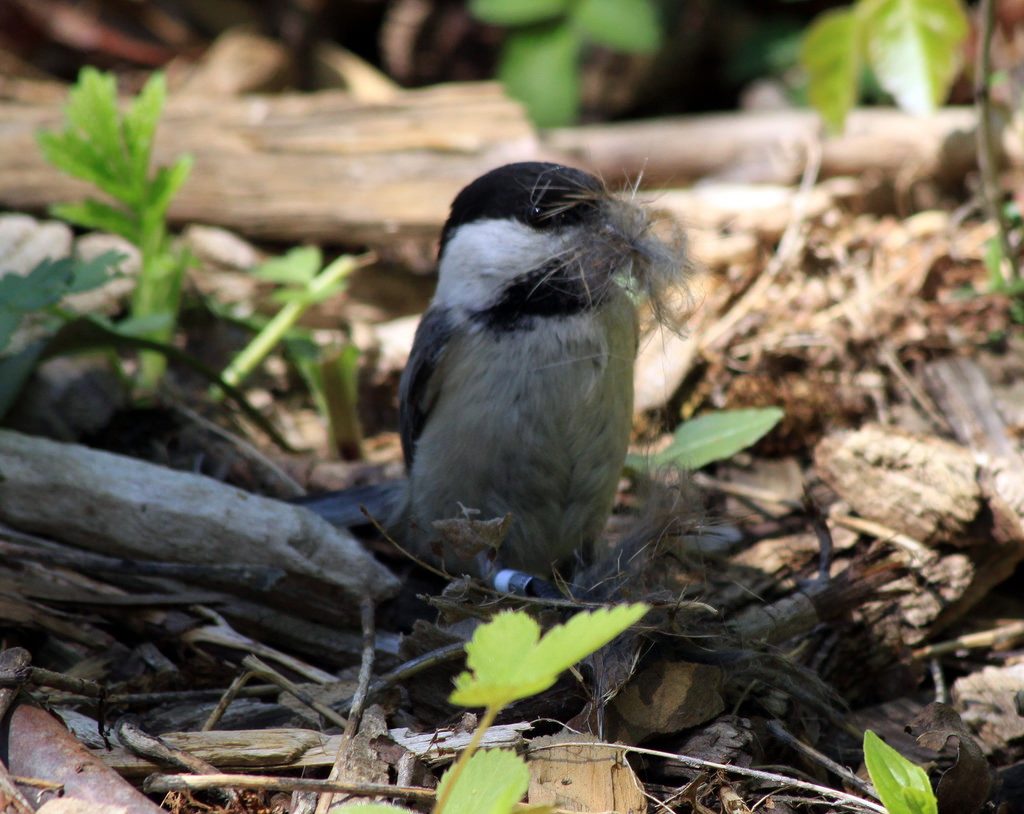58. Provide nesting materials.

UPDATE: We now know something we didn’t when I wrote (101 Ways to Help Birds) in 2004 and 2005: NEVER provide birds with pet fur if your pets are getting shampooed with a flea and tick product or getting an oral medication that kills fleas and ticks! When these formulations started being used, I didn’t know for certain how bad or good they might be–it seemed possible that fur from treated pets might reduce lice and mites on nestlings, which might offset any negatives from the baby birds’ exposure. The pharmaceutical corporations that profit from selling these extremely popular and important medications never research possible collateral damage, and if they do inadvertently discover a problem, unless it is extremely obvious, they do their best to suppress dissemination of the information. But a 2025 study confirmed that a lot of treated insecticidal fur is turning up in bird nests, and in these nests, a higher number of either dead offspring or unhatched eggs was found.
Setting out good nesting materials in clean suet cages or wedged into bark on trees or shrubs is a great help to backyard birds. It’s best not to use white or bright colors (except for white feathers used by Tree Swallows), and natural fibers are better than synthetics. But a study published in 2025 by Tassin de Montaigu C, Glauser G, Guinchard S, Goulson D., “High prevalence of veterinary drugs in bird’s nests.” found that the fur in every Eurasian Blue Tit and Great Tit nest tested was contaminated with veterinary pesticides, with higher nest mortality the more pesticide present.
Never set out dryer lint for nesting birds. Although the soft, fluffy lint feels suitable both to us and to birds, after it gets wet and then dries, it becomes brittle and crumbly and could cause a nest to fall apart. Any type of string or twine should be no longer than about six inches to prevent possible strangulation.
Suitable nest materials to offer birds include the following:
- Cotton quilt batting
- Frayed binder twine or yarn, cut into six-inch lengths (choose dull colors)
- Thin strips of rags from natural fiber cloth, about one inch by six inches
- Dog and cat fur (easily available after brushing) [ON EDIT: do NOT use pet fur that has been treated with insecticides!!!]
- Horse hair and sheep wool; make sure to cut long hair from manes and tails shorter than six inches
- Milkweed down (planting milkweed is even more helpful to birds)
- Small white feathers retrieved from old pillows or a poultry farm
- Discarded snakeskins, perhaps from someone who raises snakes (Great Crested Flycatchers in particular are drawn to snakeskins)
- Alfalfa stems and other high-quality natural fibers, cut into four- to five-inch lengths
- Small twigs, dead leaves, dry grass, bark strips, pine needles.
Providing a small muddy puddle away from roads can also be very helpful for birds that use mud in nest construction, especially robins and swallows. Fostering spiders in your yard is useful because many birds utilize spider silk in their nests. And encouraging lichens on dead wood, moist rocks, or tree bark can provide important nesting materials for hummingbirds and small songbirds.
From 101 Ways to Help Birds, published by Stackpole in 2006. Please consider buying the book to show that there is a market for bird conservation books. (Photos, links, and updated information at the end of some entries are not from the book.)